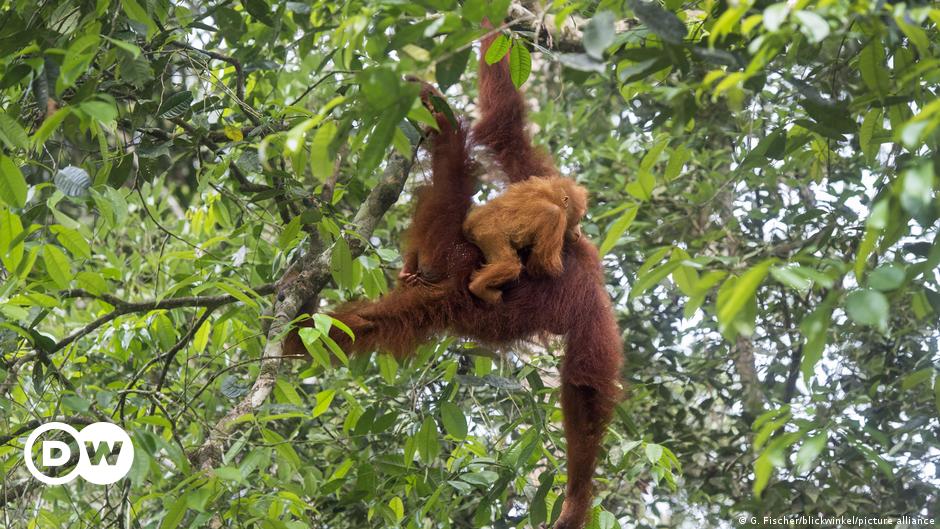Malaysia intends to present orangutans to nations that import its palm oil. The move aims to allay concerns that palm oil production is often linked to the destruction of the endangered apes’ habitats.
Malaysia has said it plans to present orangutans to major palm-oil-importing countries with the aim of boosting its credentials as a conserver of biodiversity.
The Asian nation is the world’s second-largest producer of the widely used commodity, whose production is blamed by environmentalists for fuelling the destruction of the great ape’s habitats in both Malaysia and Indonesia.
The move comes after the EU last year approved a ban on importing commodities, like palm oil, that are linked to deforestation.
Malaysia says the ban has been introduced to protect the bloc’s own oilseeds market.



This is the best summary I could come up with:
Malaysia has said it plans to present orangutans to major palm-oil-importing countries with the aim of boosting its credentials as a conserver of biodiversity.
The Asian nation is the world’s second-largest producer of the widely used commodity, whose production is blamed by environmentalists for fuelling the destruction of the great ape’s habitats in both Malaysia and Indonesia.
Malaysia’s commodities minister, Johari Abdul Ghani, said the plan would entail gifting the great apes to trading partners, such as the EU, India and China, that import large quantities of palm oil for use in products from food to cosmetics.
“This will prove to the global community that Malaysia is committed to biodiversity conservation,” Johari said on social media platform X, formerly Twitter, late on Tuesday.
In the scheme’s current form, China only loans pandas to foreign zoos, which must usually return any offspring within a few years of their birth to join the country’s breeding program.
However, according to the conservation organization WWF, its production on large plantations has decisively contributed to a significant loss of orangutan habitat in both Malaysia and Indonesia, which is the main exporter of the commodity.
The original article contains 366 words, the summary contains 184 words. Saved 50%. I’m a bot and I’m open source!